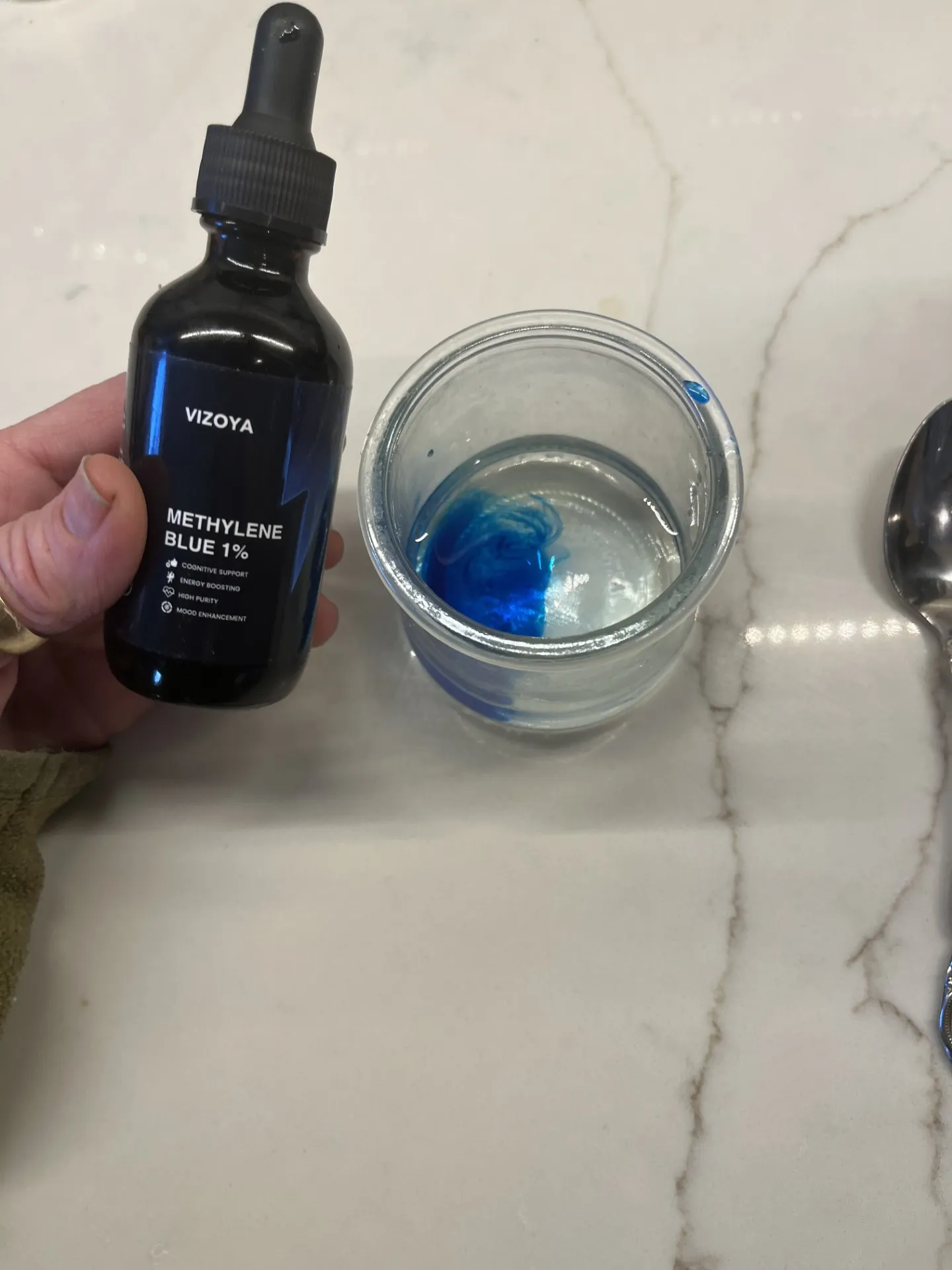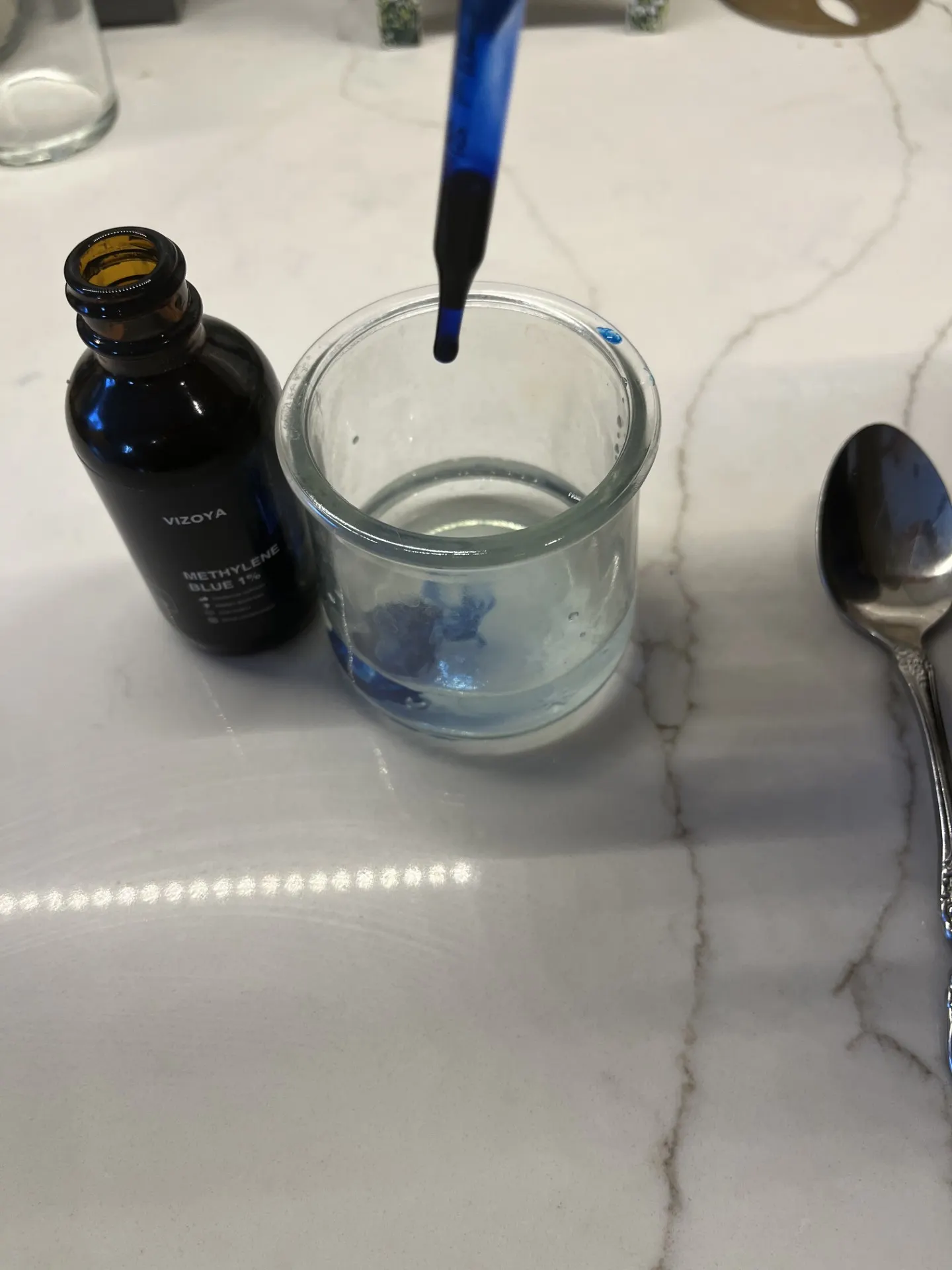Methylene Blue for Chronic Lymphocytic Leukemia (CLL) & Mitochondrial Function
Methylene Blue (MB) is gaining attention as a potential treatment for Chronic Lymphocytic Leukemia (CLL) due to its role in enhancing mitochondrial function and reducing oxidative stress. This blog explores the connection between CLL, mitochondrial dysfunction, and oxidative stress while examining the therapeutic potential of MB.

My Journey with CLL
On November 11, 2022, I was diagnosed with CLL. Initially, I was told my case was non-aggressive, but a second opinion and a FISH test revealed a more advanced stage. My doctor recommended a clinical trial involving chemotherapy and hydrotherapy to mitigate Tumor Lysis Syndrome (TLS). However, I decided to explore alternative methods, including diet, detoxification, and natural therapies.
As a health researcher, I wrote my book Kick Cancer’s Acid: A Five-Day Whole Life Detox to document my journey of cleansing the body at a cellular level. My research led me to integrative oncology strategies, dietary changes, fasting, and ultimately, Methylene Blue, which has shown potential in supporting mitochondrial function and cellular energy production.
Understanding Oxidative Stress and Energy Metabolism in CLL
CLL cells generate increased levels of reactive oxygen species (ROS) and nitric oxide (NO), which contribute to disease progression and resistance to therapy. Unlike other malignant cells that rely on aerobic glycolysis, CLL cells predominantly use oxidative phosphorylation. This metabolic adaptation allows them to resist apoptosis and persist in the body.
How Oxidative Stress Fuels CLL
ROS stimulate pathways involved in cell division and proliferation, preventing apoptosis. Excess oxidative stress induces genetic mutations, making CLL cells resistant to chemotherapy. While moderate oxidative stress benefits cancer cells, excessive oxidative damage can be lethal, presenting an opportunity for targeted therapies.
Mitochondria as Therapeutic Targets
• Targeting mitochondrial metabolism may lead to selective cytotoxicity in CLL cells.
• Enhancing mitochondrial metabolism can improve T-cell function and reduce DNA damage.
• Improving mitochondria mass makes them more resistant to chemo. CLL cells with greater mitochondrial mass are more resistant to chemotherapy, but certain inhibitors can restore mitochondrial activity.
Combating CLL Oxidative Stress and Metabolic Dysfunction
Given CLL’s dependence on oxidative stress and metabolic alterations, natural and strategic interventions can be powerful tools in treatment.
✔️ Antioxidant-Rich Nutrition: Natural compounds such as EGCG (from green tea), resveratrol (from grapes), and curcumin (from turmeric) have shown potential in reducing ROS levels and inducing apoptosis in CLL cells. See my blog on various nutritional options. (Click here to see my article on ECGC)
✔️ Methylene Blue (MB) Therapy: MB enhances mitochondrial function, improves cellular respiration, reduces oxidative stress, and prevents mitochondrial dysfunction.
✔️ Fasting & Ketogenic Diet: Since CLL cells rely on glucose metabolism, intermittent fasting and a ketogenic diet (high-fat, low-carb) may deprive them of their primary energy source. (Click here for more on fasting and key proteins in a vegetarian diet)
✔️ Exercise & Movement: Moderate-intensity movement boosts mitochondrial function, increases antioxidant defenses, and reduces inflammation.
By addressing both oxidative stress and metabolic dysfunction, it may be possible to weaken CLL cells while strengthening the body’s defenses.
Historical and Contemporary Uses of Methylene Blue
I was amazed by the fact that MB has been used for over a century to treat malaria, methemoglobinemia, and carbon monoxide poisoning. Its role in mitochondrial function has sparked renewed interest in recent years. Research suggests MB enhances glucose uptake, increases oxygen consumption, and shifts metabolism toward mitochondrial oxidative phosphorylation. Let's learn more about it's benefits.
MB for Cancer and Neurodegenerative Diseases
Why would anyone say that MB helps brain and mitochondrial function? Well, it turns out, research studies suggest that MB protects neurons in Alzheimer’s, Parkinson’s, and Huntington’s disease by improving mitochondrial function.
MB has also been shown to inhibit glioblastoma cell proliferation (brain tumors) by enhancing oxidative phosphorylation, a cellular process that uses the energy released during the oxidation of nutrients (like glucose) to generate ATP. What is ATP? It is the primary energy currency of cells, and through a series of reactions involving the electron transport chain and chemiosmosis it also is known for reducing glycolysis.
MB may improve mitochondrial function in CLL cells, leading to better energy production and reduced disease progression.
Dosage and Safety Considerations
MB is available in pill and liquid forms, with dosages ranging from 10-30 mg daily. However, caution is advised regarding potential interactions with serotonergic drugs, as MB may increase serotonin levels and pose risks when combined with SSRIs or MAO inhibitors.
What to avoid when taking methylene blue?
Methylene blue may cause serious or fatal serotonergic syndrome when used in combination with serotonergic drugs. Avoid concomitant use of methylene blue with selective serotonin reuptake inhibitors (SSRIs), serotonin and norepinephrine reuptake inhibitors (SNRIs), and monoamine oxidase inhibitor.

Conclusion
Methylene Blue presents a promising avenue for CLL treatment by addressing mitochondrial dysfunction and oxidative stress. Alongside dietary changes, fasting, and movement, MB may offer a novel strategy for managing CLL while promoting overall well-being. Future research and integrative approaches will continue to shape its potential role in cancer treatment.
Stay tuned for upcoming posts where I’ll explore more details about Methylene Blue therapy and other mitochondrial-supporting strategies for CLL.
References
Schirmer, R. H., Adler, H., Pickhardt, M., & Mandelkow, E. (2011). "Lest we forget you--methylene blue...". Neurobiology of aging, 32(12), 2325.e7–2325.e2.325E16. https://doi.org/10.1016/j.neurobiolaging.2010.12.012
Alici-Evcimen, Y., & Breitbart, W. S. (2007). Ifosfamide neuropsychiatric toxicity in patients with cancer. Psycho-oncology, 16(10), 956–960. https://doi.org/10.1002/pon.1161
Tucker, D., Lu, Y., & Zhang, Q. (2018). From Mitochondrial Function to Neuroprotection-an Emerging Role for Methylene Blue. Molecular neurobiology, 55(6), 5137–5153. https://doi.org/10.1007/s12035-017-0712-2
Wallace D. C. (2005). A mitochondrial paradigm of metabolic and degenerative diseases, aging, and cancer: a dawn for evolutionary medicine. Annual review of genetics, 39, 359–407. https://doi.org/10.1146/annurev.genet.39.110304.095751
Vos, K. A., Gordon, P. M. K., & Heyne, B. (2022). Methylene blue in combination with sunlight as a low cost and effective disinfection method for coronavirus-contaminated PPE. American journal of infection control, 50(8), 906–908. https://doi.org/10.1016/j.ajic.2022.02.019
Yang, S. H., Li, W., Sumien, N., Forster, M., Simpkins, J. W., & Liu, R. (2017). Alternative mitochondrial electron transfer for the treatment of neurodegenerative diseases and cancers: Methylene blue connects the dots. Progress in neurobiology, 157, 273–291. https://doi.org/10.1016/j.pneurobio.2015.10.005













